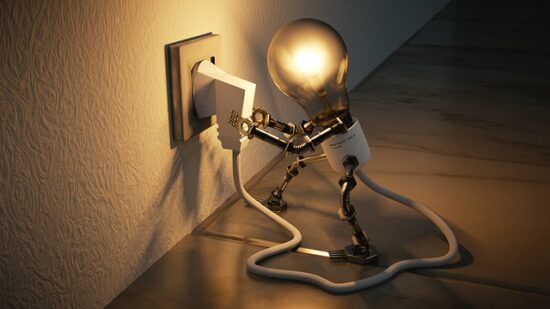The flow of electric charge is known as electricity. There are two kinds of electric charges: positive charge and negative charge. When a positive charge comes close to another positively charged substance, it repels. Likewise negative charges repel against other negatively charged substances. A negatively charged substance is however attracted to a positively charged substance and vice versa. Now let’s have a look at other electricity facts for kids.
Electricity Facts For Kids
First person to study electricity: Thales of Miletus
Symbol of Electric Charge: ‘Q’
SI Unit of Electric Charge: Coulomb (C)
SI Unit of Current: Ampere
SI Unit of Electric Power: Watt
History of Electricity
- The word ‘Electricity’ was coined by a British scientist and doctor named William Gilbert in 1600.
- A Greek philosopher who is thought to be the first one to study electricity is ‘Thales of Miletus’.
- Arabs are thought to be first people who had some idea about electricity or the natural source of it like lightning.
- In olden times no one was familiar with the concept of electricity but still they knew about electric fish like electric eels. They used to cure some patients by touching the victim’s body with it.
- Benjamin Franklin, who is known as ‘The First American’, carried out deep research on electricity during the 18th century.
Electric Charge
- The symbol for electric charge is ‘Q’.
- The SI unit of electric charge is Coulomb (C).
- When a substance has surplus electrons in its atomic structure, it becomes a negatively charged object.
- When a substance becomes electrically charged, it creates a field around itself which is known as Electromagnetic Field (EMF).
- Electromagnetic field is made up of magnetic field and electric field.
- An object that allows the flow of electric charge is called a Conductor.
- An object that does not allow the flow of electric charge is called an Insulator.
- An object that partially allows the flow of electric charge is called Semi-conductor.
Electric Current
- The flow of electric charge is known as electric current. The SI unit of current in Ampere.
 If an object resists against electric current and does not allow the electric charge to flow easily, this phenomenon is known as Electrical Resistivity.
If an object resists against electric current and does not allow the electric charge to flow easily, this phenomenon is known as Electrical Resistivity.- The method by which a material allows electric current to pass through it is called Electrical Conduction. It is exactly the opposite of electrical resistivity.
- The speed at which an electrical circuit transmits electrical energy is known as Electric power. It is the rate of doing work. It is denoted by a symbol ‘P’.
Generator
- The mechanical energy is converted into electrical energy with the help of a special device known as Generator.
- Electric power is generated by using electric generators. Electric batteries can also produce electric power.
- The very first generator for producing electricity was called Dynamo.
- A machine that generates static electricity is called electrostatic generator.
- There are two types of electrostatic generators: Friction machines and Influence machines.
Battery
- A device which converts chemical energy (stored in the cells) into electrical energy with the help of very small electrochemical cells is known as a Battery.
- During 1800s, an Italian physicist named Alessandro Volta was the first scientist who invented batteries.
- Two kinds of batteries are there: primary batteries are those batteries that cannot be used again and secondary batteries are those that can be used again by recharging it.
Power Station
- The industrial space from where electric power is generated is called power station. It is also known as powerhouse.
- A generator is installed at the heart of every power station in order to convert mechanical energy into electrical energy.
- In 1868 in England, the design of the first power station of the world was made by William George Armstrong.
- The name of the first ever power station was ‘Edison Electric Light Station’. It was built in London in 1882 by Thomas Edison.
- A thermal energy is converted into rotational energy by using a heat engine. The heat engine generates mechanical power to convert this energy. This setup is known as thermal power station. It is also called steam power station.
Do you know that wind can also generate electricity? Read more about it at Wind Power Facts For Kids
Hydroelectricity
- When electrical power is produced by using the force of falling water, it is called hydropower. When hydropower generates electricity, it is known as hydroelectricity.
- The biggest producer of hydroelectricity around the world is China.
- Almost 16 percent of the electricity generated all over the world is produced by hydropower.
More Electricity Facts For Kids
- Michael Faraday was a British scientist. He was the first person who gave the concept of ‘Electric Field’. Any charged body creates an electric field around it.
- The electrical energy is converted into mechanical energy by using a special machine called electric motor. Thus, it performs exactly the reverse of what is performed by the generator.
- The world’s biggest hydroelectric power station is in China. It is built on Three Gorges Dam and has the capacity to produce 22,500 MW (Megawatt) of electricity.
- Solar energy is also converted into electricity with the help of Photovoltaic cells (PV). This type of electricity is known as solar power.
Did you really find these electricity facts for kids helpful? Is it what you’re looking for? Please comment and help us improving this article. Thanks for reading it!
Leave a Reply